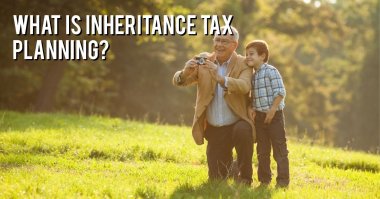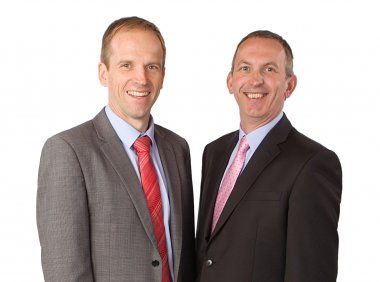
What is inheritance tax planning?

Howard Goodship and Stewart Sims-Handcock Chartered Financial Planners in Ringwood, Hampshire
Howard Goodship, CFP, Ringwood - What is Inheritance Tax Planning?
Sunday 30 June, 2019
Howard Goodship, chartered financial planner and member of the Ringwood financial planning team has written his eighth article in a series on Understanding Investments.
To read other articles in the Understanding Investments series please see the articles below or visit our New to Investing web page.
Understanding Investment Articles
1 What are Investments and why should you own them?
2 Managing risk and tax to earn a higher return.
4 Tax efficient investment income.
5 What are my pre-retirement options?
6 What are your choices at retirement?
7 How much money do you need in retirement?
What is inheritance tax planning?
Inheritance Tax Planning can appear complicated and is often something which clients think about but never get around to acting on for fear of making the wrong decisions. But most clients fundamentally wish to avoid their beneficiaries (usually their family) having to pay tax on their demise.
Howard Goodship, member of the Lonsdale Wealth Management Ringwood financial planning team said:
‘I outlined a simple way to approach planning in my previous article - How much money do you need in retirement? My starting point was a cash-flow projection of your future financial commitments and plans. This identifies any surplus income and capital which you are unlikely to need yourself, which you can therefore “gift” either outright or into a Trust. An outright gift is known as a PET (Potentially Exempt Transfer) and a gift into a Trust can be either a PET or a CLT (Chargeable Lifetime Transfer), depending on the type of Trust. Both fall outside your estate after 7 years but a CLT has additional tax implications to consider.’
Trusts
Trusts can appear complicated so for this article I want to highlight the two most common types of Trust and how they could be used. I am happy to provide further details in person if required.
Bare Trusts:
The simplest form, with any assets treated for tax purposes as though they are owned outright by the beneficiary (other than where parental settlement rules apply). These are often used by Grandparents to put money aside for their Grandchildren as any investments can grow tax efficiently using the Grandchild’s personal tax allowances (every person at any age has personal tax allowances). The limitation is that the beneficiary can demand access to the investments at age 18, when they become the outright owner, so they aren’t usually suitable for very significant sums. The gift into the Trust is classed as a PET unless fully or partially covered by an exemption such as the £3000 per annum gift exemption.
Discretionary Trusts:
The most common form of Trust because of their flexibility. Whilst you can list beneficiaries, they are classed as “potential” beneficiaries, so they can be varied at any time. Because they are “potential”, the Trust assets belong to the Trust and not the beneficiaries, so this provides protection against family break-up, benefits and care home fees. Any payment into the Trust is a CLT, which means there is an initial tax charge if the payments exceed the Nil-Rate Band at the time (currently £325,000 per donor). The Trust assets are also taxed at the highest rate of tax (45% interest and 38.1% dividends, albeit there is a reduction on the first £1000 of tax). There can also be a periodic 10-year tax charge or exit charge on the value of the Trust assets if they exceed the Nil-Rate Band at that time.
Howard Goodship, member of the Lonsdale Wealth Management Ringwood financial planning team continued:
‘Sounds complicated? They can be, but they can also be incredibly effective providing you use them correctly; for example, a couple could pay £500,000 into a discretionary trust and note their children and grandchildren as potential beneficiaries. There is no initial tax charge as the sum paid in is under the combined nil rate band of £650,000 and even allowing for investment growth, it is unlikely to incur the periodic tax charge in 10 years- time (if it did then you probably wouldn’t mind as it means the investments have done extremely well and the maximum tax charge is 6% on the growth above the nil rate band).’
Ongoing income and dividend tax can be mitigated by either paying the income out to none or basic rate tax paying beneficiaries. Alternatively, the funds can be invested in an Offshore bond which can grow tax-free (this could result in a tax charge later so the ability to “exit” the bond at a later date tax efficiently needs careful consideration and advice).
There are many variations to these two common trusts. Absolute Trusts for sums which exceed £650,000 and Loan Trusts & Discounted Gift Trusts (DGTs) which can provide the settlor with an income during their lifetime.
In Summary…
The starting point for any Inheritance Tax Planning is a discussion about what you are trying to achieve, and what is holding you back from acting. Once these two things are understood, it is easier to make the right decision with proper professional advice. We often work alongside solicitors to ensure solutions are as effective as possible. If you would like financial planning advice from a Lonsdale independent financial adviser please contact us or complete our online booking form.
The Financial Conduct Authority does not regulate Inheritance Tax Planning.
Latest News Next Article Previous Article



